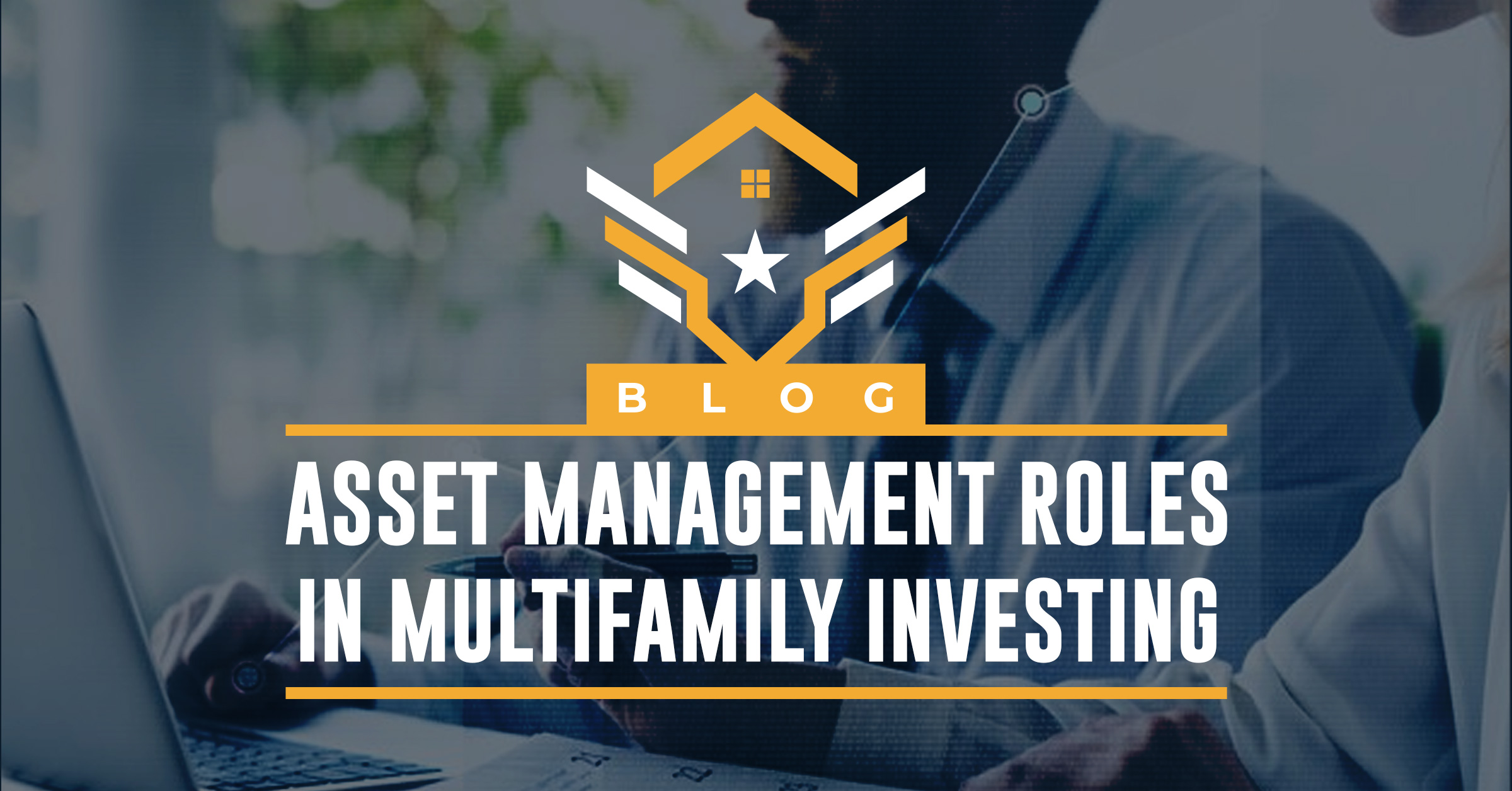What is Asset Management and Who is an Asset Manager?
In short, the Asset Manager (AM) is the manager of the Property Manager (PM). From the time the listing is received–to the time the property is sold–, the AM is your boots-on-the-ground for understanding the investment property performance. The AM should live within driving distance of the property. While every deal is different, the AM will most likely be a General Partner in the deal. Including the AM as an equity partner gives them skin-in-the-game and naturally incentivizes them to execute the business plan as efficiently as possible.
Why is the Asset Manager Role Important?
As the primary point of contact for understanding day to day operations, the AM fuels the communication battle rhythm by providing regular updates to the General Partners. Updates include income, expenses, renovation status, and unexpected events. This information is translated into your income statement and compared to the pro forma in your business plan. That allows you to see if the investment is meeting expectations on a month-by-month basis. You want to run your multifamily real estate like a business, and the AM is the Chief Operations Officer.
What Makes a Great Asset Manager?
Communication
The AM should establish and execute a communication cadence with the general partners and the PM. There should be regular and clear expectations for communication. Unexpected events will occur, and there should be an established SOP for that as well. A strong relationship between the AM and PM is a requirement for successful operations.
Organization and Accountability
The AM is ultimately responsible for executing the business plan. They must ensure accurate reporting and be able to get in the details when necessary. There are many work priorities (expected and unexpected), and a great AM can sequence these priorities to ensure the best operational efficiency. The AM orchestrates operations from a high level and holds the PM, contractors, and other key partners accountable for the agreed-upon expectations. The AM must inspect what they expect.
Leadership Presence
Multifamily real estate is a team sport. The AM needs to manage several relationships on-site as well as with the general partner team. As the senior leader on-site, his behavior will set the tone for those working on the property. The AM needs to be on-site regularly and randomly. While the PM is directly responsible for managing the on-site manager and other staff, all on-site staff must know the AM and be comfortable communicating with him. On-site staff should know that the AM cares for the residents and the staff of the property. If the AM is present and takes a genuine interest in the property operations, the culture will likely also show in the management.
The Asset Manager Playbook
Think of the AM’s playbook as a detailed execution strategy (or 5 paragraph order) for the business plan. The playbook contains timelines and priorities of work that start the day of closing. Depending on the complexity of value-add in the business plan, the playbook will show the order units should be renovated– as well as specific renovations for each unit. The playbook also contains the communication cadences for all parties, reporting requirements and Key Performance Indicators (KPIs) used to evaluate operations. KPIs include metrics like total rent collection and fees (income), total payroll and repairs & maintenance expenses, current occupancy, eviction status, etc. Creating the playbook with input from the general partners and the PM will ensure everyone has the same expectations.
The Asset Manager Before Due Diligence
Before a property is identified, the AM can take the investment criteria and communicate it to his local network of property managers and brokers. This local network can help generate deal flow from the target market. The AM uses criteria– like property class, unit size, and geographic location– to screen local property managers before the property is even identified. A great AM will have a detailed checklist for screening property managers. See below to get a free copy. Once a property is chosen, the AM will discuss it with the best PM to receive insight and an estimated PM fee for underwriting.
Is your submarket analysis correct? Deploy your AM to conduct some Secret Shopping. How is the immediate neighborhood around the apartment community? Does it feel safe? Are there signs of deferred maintenance? Are there kids playing on the property? What do the residents have to say about the property? Is the on-site manager friendly? Is the property well maintained overall? What do other nearby apartments look like? The AM can provide priceless insights and save the team a lot of time by conducting a site visit before submitting the letter of intent.
The Asset Manager During Due Diligence
Once you’re into due diligence, time is precious (usually 30-60 days), so you need your AM and PM to be proactive and organized when completing the physical due diligence. The AM needs to conduct a thorough investigation and constantly be asking questions as they complete the Due Diligence checklist. What did we miss in our underwriting? Is the information used in our underwriting accurate (Rent Roll, T12, OM, Rules of Thumb)? What makes this a bad deal? Why shouldn’t we move forward with this property? By answering these questions, you’re not only preparing for the worst, but you’re also building a case for negotiating the purchase price. Several inspections need to take place by the management team and third parties. The AM, PM, and General Contractor (GC) must inspect every single unit. Take detailed notes. What is the state of the electrical, plumbing, and HVAC systems? Any leaks? What deferred maintenance exists on the exterior and interior of each building? These are the types of questions the AM is answering as they complete the Due Diligence checklist. Inspecting every unit will allow the PM and GC to provide construction costs for refining your underwriting.
Third-Party Inspections Include:
- Phase 1 Environmental Site Assessment (ESA) (whether your lender requires it or not)
- Plumbing inspection to include scoping and stress testing of all lines
- American Land Title Association Survey (ALTA Survey)
Appraisal - State or local required certificates or reports
During the life of the investment
After closing, the business plan is given to the AM for execution. The AM should be ready for the unexpected. When a tree falls and punctures the roof, the AM is the one who will be evaluating which contractor should perform the repair. It’s great to have a PM that can perform routine maintenance, but for some of the more technical tasks, a contractor will be needed. The AM is going to be the person that is connected with local contractors. They will have a pulse for what construction prices are in the area to ensure the quotes for repair are fair. In the end, the AM is the person that allows all other investors to sleep easy at night. The AM drives operations and communicates the good and the bad back to the team. Choose your AM wisely.
Asset Management isn’t the most passive position on the GP team but if you’re willing to roll up your sleeves and spend time on-site, you can add significant value to the team. We’ve only scratched the surface here; there is a lot that goes into Asset Management, Property Management, and Due Diligence.
To receive a detailed 80 question “Property Manager Screening Checklist”, contact Joe Balayti at Operational Capital by visiting OpCapLLC.com








